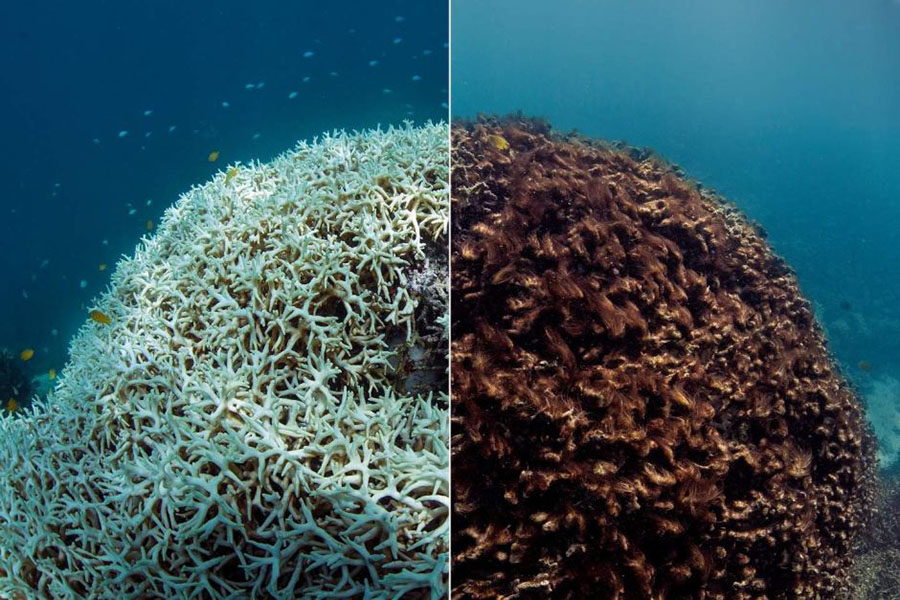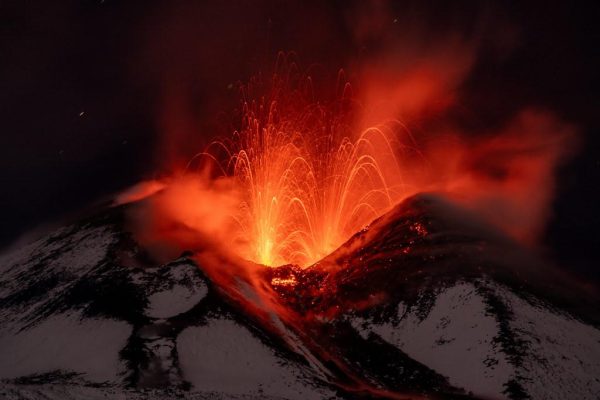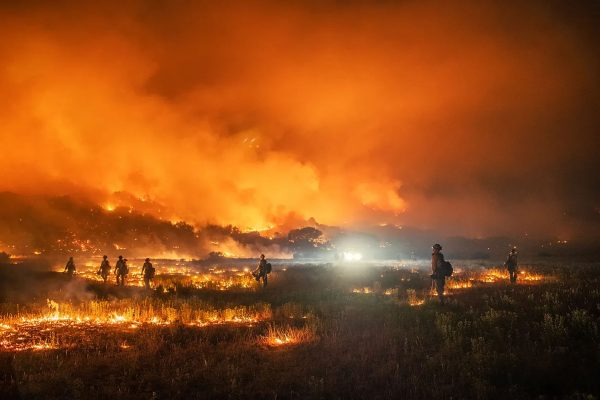Global Warming Destroying Great Barrier Reef, Florida Reefs
Photo courtesy of http://www.abc.net.au
This image shows dying, bleached coral (left) in the Great Barrier Reef in March 2016 and the same coral (right) which is dead just two months later.
The 134,000 square-mile reef off the coast of Queensland, Australia, also known as the Great Barrier Reef, is the largest living reef in the world, but is it really living? Over the course of the past two years, the reef has been deteriorating because of “bleaching.” The bleaching takes place when coral is under stressed conditions from weather or lack of light and minerals. In the case of the Great Barrier Reef, the most significant cause of its decline is from warmer water temperatures as a result of global warming. Information posted on cnet.com claims that already 29% of the shallow water coral in the Great Barrier Reef has been damaged.
In a March 15, 2017 article on theverge.com, Mark Eakin, a coral reef expert and the coordinator of the National Oceanic and Atmospheric Administration’s Coral Reef Watch, put it this way: “If you think about it, on a really hot day, it’s hot out, it’s not a big deal. But when it goes on and on through time, that’s when people without air conditioning start dying.”
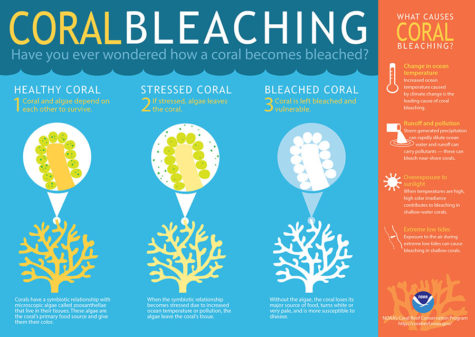
This chart explains the stages and causes of coral bleaching.
The Great Barrier reef is home to over 400 types of coral, all of which house zooxanthellae algae – a type of plankton that gives the coral its brilliant colors. According to the NOAA’s website, “The corals and algae have a mutualistic relationship. The coral provides the algae with a protected environment and compounds they need for photosynthesis. In return, the algae produce oxygen and help the coral to remove wastes.” It is a symbiotic relationship, but as the waters warm, the algae leaves, so the coral dies, and the 1,500 different species of fish, many of which rely on the algae as a food source, leave the reef.
Not only does the death of the reef affect the ecosystem and fisherman’s income, but it also makes the once strong coral weak and fragile, rendering it ineffective in stopping the sea’s waves from crashing into the homes of locals living on the coast. The reef is also responsible for bringing in between $3.7 – $4.5 million in tourism per year.
In fact, some Benjamin students have even traveled to the Great Barrier Reef recently. “I loved all the different colors of the coral and the different types of fish we don’t have back home,” said eight grader Sydney Steinger, who traveled to Australia over Spring Break in 2015, before the bleaching really started to become apparent. “It’s sad because if the bleaching gets worse, nobody will be able to have the amazing experience I had when I visited.”
If something like this can cause interference with the reefs in Australia, than the ecology in South Florida could be harmed as well.
According to a June 19, 2017 Sun-Sentinel article, just off the coast of Hollywood, Florida, a huge 300-year-old piece of coral died. Because of the bleaching taking place in the Great Barrier Reef, extensive attention was brought to both the coral dying in Florida and the issue of climate change. “Presumably a cooler summer might help the corals fight off the disease better, but it has been lethal so far even into the cooler months,” said Brian Walker, a research scientist at Nova Southern University.
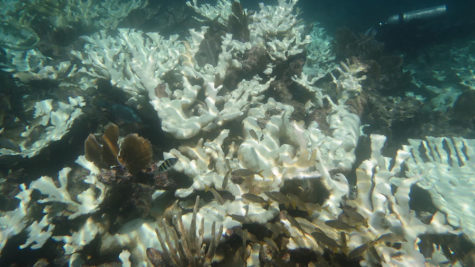
This Elkhorn coral off the coast of South Florida suffers from bleaching.
Unfortunately, cooler summers are hard to come by. When global warming takes place and heat-trapping gases are released into the atmosphere, some of this heat escapes into the ocean. According to theguardian.com, Earth’s oceans are warming 13% faster than thought by scientists and accelerating. Even if humans stopped leaking greenhouse gases into the atmosphere right now, climate change would still take place for years to come, absorbing the remaining gases in the atmosphere. The warmer water not only affects the habitat of many species of sea life, but interferes with weather patterns.
Hurricanes form over warm water, and the warmer the water, the more powerful a hurricane potentially can be. According to a September 20, 2017 national geographic.com article (“How Climate Change Likely Strengthened Recent Hurricanes,”) scientists suspect Hurricane Harvey became so destructive from the water temperatures rising. “When you add in the climate’s natural variability and then the right conditions come along, you can get a storm which is stronger than you might otherwise have expected,” said Kevin Trenberth, a senior scientist the the National Center for Atmospheric Research.
South Florida is no stranger to hurricanes, which could mean that warmer waters may make any future hurricanes more dangerous for Floridians and their homes. In addition, Florida is home to lots of sea life. Snow birds fly down in the winter to enjoy the natural beauty that our weather, beaches, and ocean offer. If the world’s largest reef is being destroyed by bleaching, South Florida’s reefs certainly could too. As reported by data.aims.gov, it is 81.5 degrees Fahrenheit (27.5 degrees Celcius) off the coast of the Great Barrier Reef. Nodc.noaa.gov, states that the water temperature off the coast of Lake Worth is 77 degrees Fahrenheit – not as warm as the waters off the coast of Australia, but definitely warm enough to adversely affect the health of the coral.
However, TBS is trying to inform the next generation about problems such as this so that the School’s current students can be part of the solution. “The reason we (The Benjamin School) study marine biology and focus on local ecology in seventh-grade science is to raise awareness about these issues,” said seventh-grade science teacher Mrs. Stephanie Oster. “If there’s going to be a [positive] change, it’s going to be from us.”
So what can we do? Everyday actions can reduce the impact of global warming. To help keep greenhouse gases out of the atmosphere which end up going into our oceans, simple things like recycling (no need to burn all that trash), minimizing water consumption (saving water reduces carbon pollution, too because it takes a lot of energy to pump, heat, and treat your water), and buying more energy efficient light bulbs can help.
